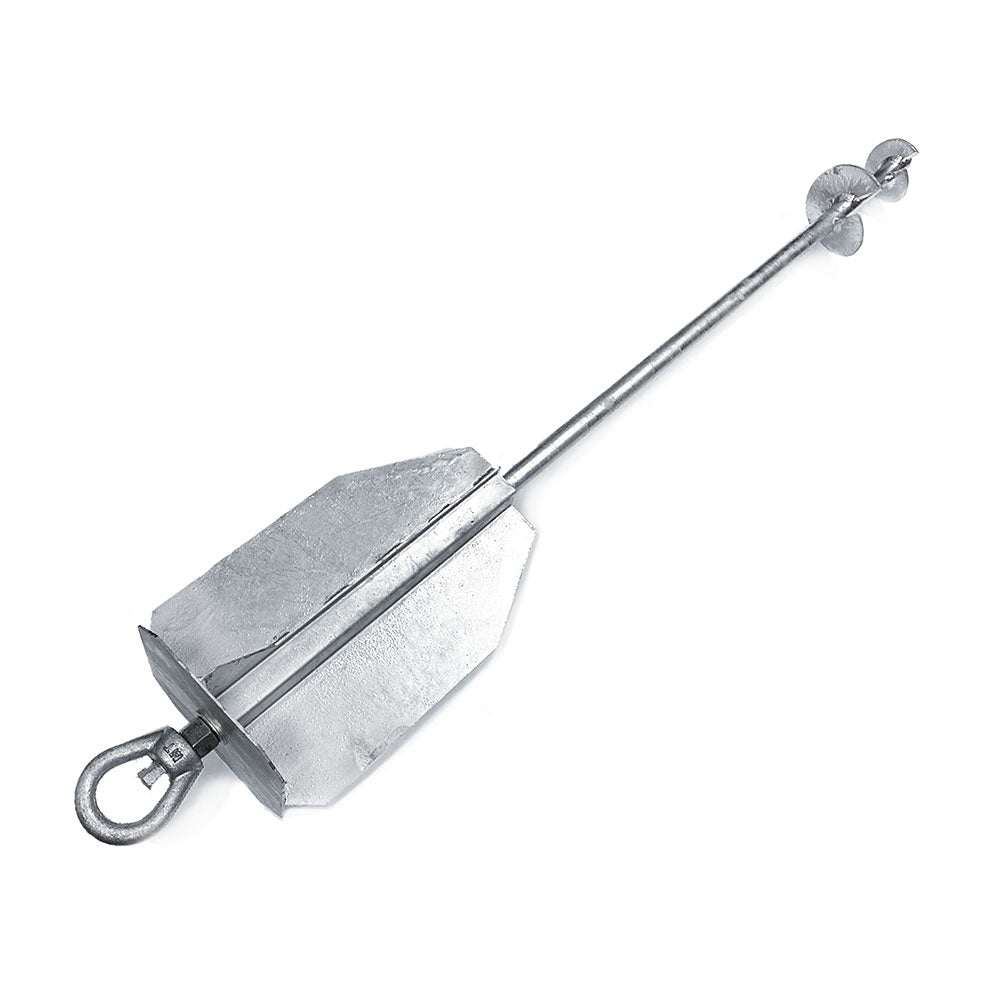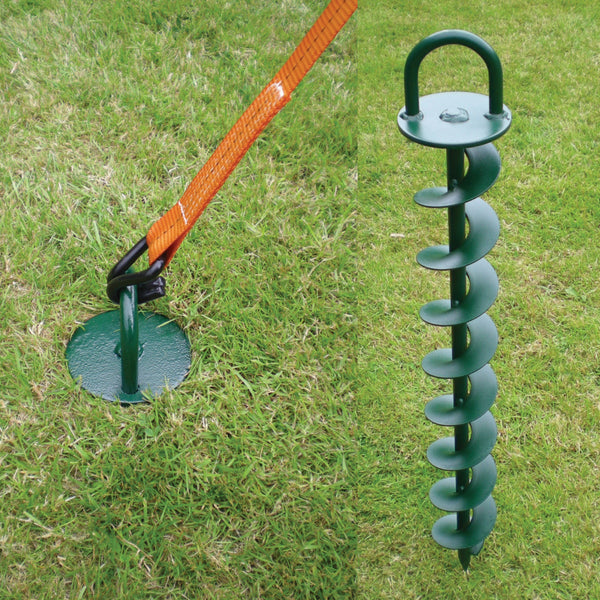A Detailed Breakdown to Choosing the Most Reliable Ground Anchor Solution
A Detailed Breakdown to Choosing the Most Reliable Ground Anchor Solution
Blog Article
Discover the Different Kinds Of Ground Anchor for Your Next Project
From auger supports, which excel in diverse soil problems, to risk anchors designed for short-lived setups, the options are countless. Additionally, concrete and screw supports existing special advantages in details situations, while deadman supports are customized for applications requiring resistance to side pressures.

Auger Anchors
Auger supports are a popular choice in various construction and landscape design jobs because of their special design and reliable anchoring abilities. These supports are composed of a helical screw-like shaft that is driven right into the ground, permitting a stable and safe hold. The spiral layout assists in easy setup and makes the most of resistance versus lateral forces, making auger anchors especially reliable in applications such as secure fencing, short-term structures, and disintegration control.
The setup procedure of auger supports is reasonably straightforward. Auger supports can be easily removed and reused, which adds to their cost-effectiveness and sustainability.
One of the substantial advantages of auger anchors is their ability to disperse tons uniformly throughout the bordering dirt, decreasing the danger of soil disruption and reducing ecological influence. Additionally, they are much less at risk to heaving or loosening gradually compared to conventional securing approaches. Auger supports are a superb selection for tasks needing resilient and trusted anchoring remedies.

Risk Anchors
When it pertains to safeguarding structures in a range of exterior applications, risk anchors use a uncomplicated and dependable remedy. These supports are normally built from long lasting products such as steel or aluminum, developed to endure environmental stresses while giving ideal stability. Their straightforward layout permits quick setup, making them an optimal option for temporary or irreversible anchoring demands.
Stake supports are particularly valuable in protecting outdoors tents, canopies, and other lightweight frameworks versus wind and climate. They operate by being driven into the ground at an angle, producing a solid hold that withstands pull-out pressures - Ground Anchor. The effectiveness of risk anchors relies on several elements, including dirt type, wetness web content, and the angle of installation
For added protection, numerous risk anchors come with accessory factors for bands or ropes, enabling for stress changes as needed. In applications such as landscape design or construction, they can successfully stabilize equipment or structures on unequal terrain. Overall, stake anchors give a functional and economical solution for protecting different outside setups, making them a recommended selection for contractors and DIY enthusiasts alike.
Concrete Anchors
Concrete anchors provide a durable remedy for safeguarding structures to concrete surfaces, making certain security and safety in numerous applications. These anchors are necessary for jobs ranging from domestic constructions to large-scale commercial installations. They can be found in various kinds, including development supports, adhesive supports, and undercut supports, each developed for specific load demands and environmental problems.
When mounted,Growth supports rely on mechanical mechanisms to hold the concrete. They are suitable for tool to durable applications. Glue supports utilize high-strength epoxy or resin to bond the support to the concrete, offering superior load-bearing abilities, specifically in broken concrete situations. Undercut supports develop a special form within the concrete, giving exceptional holding power, particularly click for more info in applications where tensile lots are widespread.
When executed appropriately, concrete anchors significantly improve the architectural integrity of numerous jobs, making them vital in modern building techniques. Comprehending the certain needs of your project will certainly aid in selecting the appropriate type of concrete anchor for the job.
Screw Anchors

Screw supports are a flexible securing option that can be efficiently employed in a selection of applications where traditional concrete anchors may not suffice. These anchors contain a helical layout that permits them to be conveniently driven into the ground, making them optimal for usage in soil and other substratums. Their special framework gives exceptional holding power and resistance to pull-out forces, making them appropriate for countless tasks, from landscaping to architectural support.
One of the primary advantages of screw supports is their simplicity of installation. They need very little devices and can commonly be set up without the demand for excavation, which conserves both time and labor prices. Additionally, screw supports can be eliminated and reused, offering a sustainable remedy for short-term applications.
Screw supports are particularly valuable in locations where dirt problems are challenging, such as loose or sandy soils. Their capacity to be installed at differing depths enables for modification based on particular project demands. Overall, screw anchors supply a reliable and dependable securing approach, making them an excellent choice for engineers and contractors looking for effective solutions for their tasks.
Deadman Anchors
Deadman supports act as a durable remedy for maintaining structures in difficult conditions, particularly where conventional securing techniques might fail. These anchors include huge, heavy objects buried underground, which produce resistance versus side pressures. The layout typically involves a straight component, such as a block of concrete or a metal plate, buried in the soil, to which cords or bands are attached.
The performance of deadman supports lies in their capacity to disperse loads over a larger area, reducing the risk of failing in unstable dirt problems. They are particularly valuable in applications such as preserving walls, short-term frameworks, and slope stabilization, where soil activity can jeopardize the integrity of the framework.
Installment of deadman supports requires mindful planning to ensure they are placed at the appropriate depth and alignment, optimizing their check my reference load-bearing ability. While they might call for even more labor and product than lightweight supports, their reliability in adverse problems makes them very useful for long-term projects. Furthermore, deadman supports are functional and can be adapted to numerous applications, making them a go-to selection for designers facing distinct obstacles in their tasks.
Conclusion
In summary, selecting the proper sort of ground support is essential for making certain stability and security in various jobs. Auger supports stand out in varied soil conditions, while stake anchors fit temporary applications. For concrete surface areas, expansion and sticky supports provide trusted options, and screw anchors use convenience in tough terrains. Deadman supports are particularly efficient in resisting side forces for preserving walls. Cautious consideration of these alternatives will certainly improve job results and structural stability.
Additionally, concrete and screw supports present distinct benefits in specific situations, while deadman anchors are tailored for applications calling for resistance to side forces - Ground Anchor.Auger supports are a prominent choice in various construction and landscape design projects due to their one-of-a-kind layout and effective securing capacities. They come in different kinds, consisting of development anchors, adhesive supports, and undercut anchors, each designed for details lots demands and environmental conditions
Adhesive supports use high-strength epoxy or click to investigate resin to bond the support to the concrete, using premium load-bearing capabilities, especially in fractured concrete circumstances. On the whole, screw anchors offer a effective and reliable securing technique, making them an exceptional choice for designers and specialists looking for effective options for their jobs.
Report this page